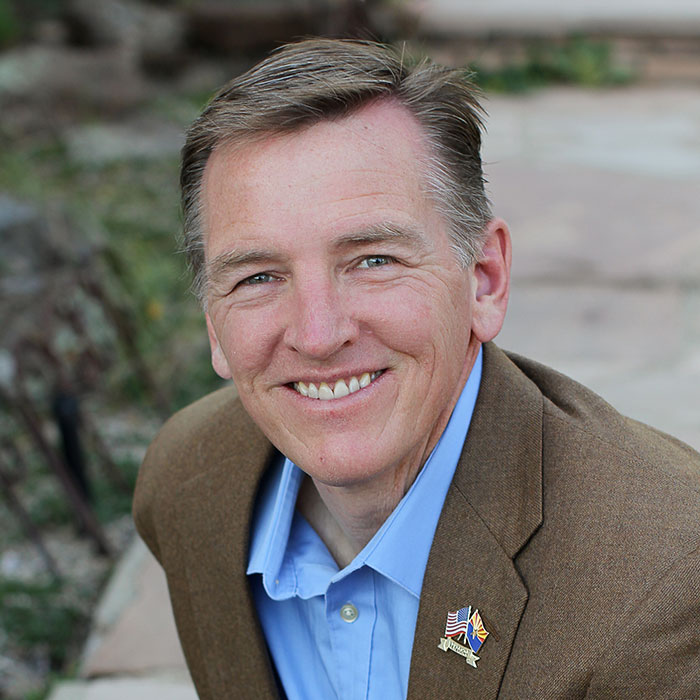Press Releases
Congressman Paul Gosar Focuses on Bennett Freeze at the Natural Resources Subcommittee on Indian and Alaska Native Affairs
Washington, DC,
March 9, 2011
On Tuesday, March 8, 2011, U.S. Congressman Paul Gosar, DDS (AZ-01) attended the Natural Resources Subcommittee on Indian and Alaska Native Affairs hearing on the effectiveness of federal spending on Native American programs, and on the President’s FY 2012 budget request for the Bureau of Indian Affairs and the Office of Special Trustee for American Indians.
FOR IMMEDIATE RELEASE: March 9, 2011 CONTACT: Congressman Paul Gosar Focuses on Bennett Freeze at the Natural Resources Subcommittee on Indian and Alaska Native Affairs On Tuesday, March 8, 2011, U.S. Congressman Paul Gosar, DDS (AZ-01) attended the Natural Resources Subcommittee on Indian and Alaska Native Affairs hearing on the effectiveness of federal spending on Native American programs, and on the President’s FY 2012 budget request for the Bureau of Indian Affairs and the Office of Special Trustee for American Indians. At the hearing, Gosar focused heavily on the government’s duty to Native Americans. He also asked about thedevastated former Bennett Freeze area and the importance of addressing this dire situation. Click here to watch a video of the hearing: http://www.youtube.com/watch?v=zyCSaOTuk6k. Gosar stated: “Chairman Young and Ranking Member Boren, thank you for holding this important hearing today. And to Assistant Secretary Echo Hawk and to Mr. Joseph, thank you for spending time with us this morning to delve into the important questions we face, as we navigate the President’s Budget Request for next fiscal year. “Native tribes are sovereign nations, yet the United States Government has a special trust obligation to these tribes, given the treaties we entered into with each tribe many decades ago. The history of this trust has been complicated to say the least. In 1975, President Nixon signed into law the Indian Self Determination and Education Assistance Act, capping a hard fought effort by native tribes to win the right for maximum native participation in the government and education of the Native American people. And indeed, the 1975 law contained promising provisions to allow individual tribes to negotiate with the Bureau of Indian Affairs to administer their social service programs, and empower native parents to be involved in their children’s education. “Native tribes have responded in kind, across the country clamoring for the flexibility to maintain their own infrastructure with BIA. But I can’t help but remark that there is far more work, far more cooperation, and far more learning to do when it comes to empowering tribes to manage their own affairs. “Given that over one fifth of my constituents are Native Americans, I have undertaken an effort to meet with representatives from native tribes both in my district and around the Southwest. And the feedback from this diverse group of folks is strikingly similar: The BIA is widely resented for inefficiency, stonewalling, and micromanaging tribal affairs. As one who believes that local control is the key to effectiveness and responsiveness, I find this trend troubling. “Tribal leaders have expressed a strong desire for BIA to move more towards awarding block grant funding to the tribes, with as little strings attached as possible. This will enable tribes to use their federal monies with an eye towards efficiency and service to their people, not towards jumping through bureaucratic hoops and red tape. I look forward to hearing our witness’s testimony today, and their thoughts on the progress of self determination and how BIA can partner with tribes on this endeavor. “In particular, I am anxious to hear more from the witnesses about a long term plan to address the Former Bennett Freeze Area. For 40 years, the U.S. Government prohibited the Navajo and Hopi tribes from developing any further infrastructure on disputed land, about 700,000 acres worth in the Black Mesa Region of Arizona. This ban affected 8,000 members of the Navajo Nation across nine communities, and remains today the most depressed area by far on the Navajo Reservation. “A recent study commissioned by BIA found that 77% of the homes in the Bennett Freeze area are not suitable for residence, and that nearly 40% are without electricity. This isn’t the result of anything but pure government inaction, at the expense of my constituents. I am distressed at the apparent lack of action on the part of the current government to address this blight on our society. While none of us present here today took part in the initial Bennett Freeze in 1966, the fact is staring us all in the face that it is our responsibility to redress these grievous and unfair wounds. “Again, thank you to the witnesses and I eagerly await your testimony.” ### |
